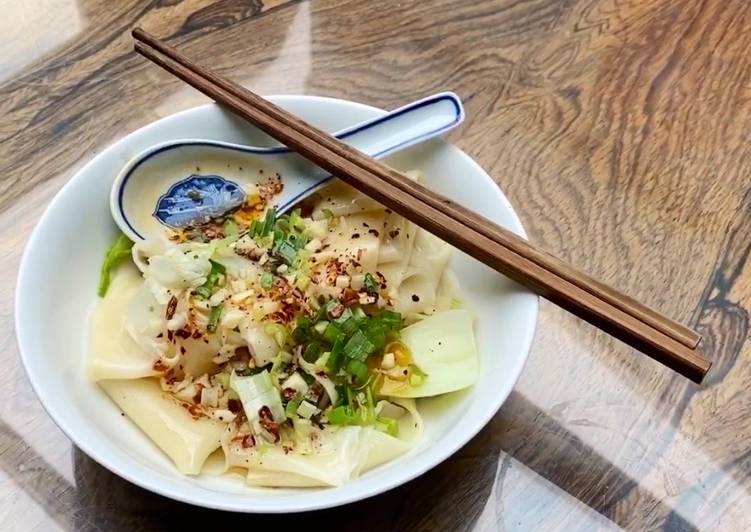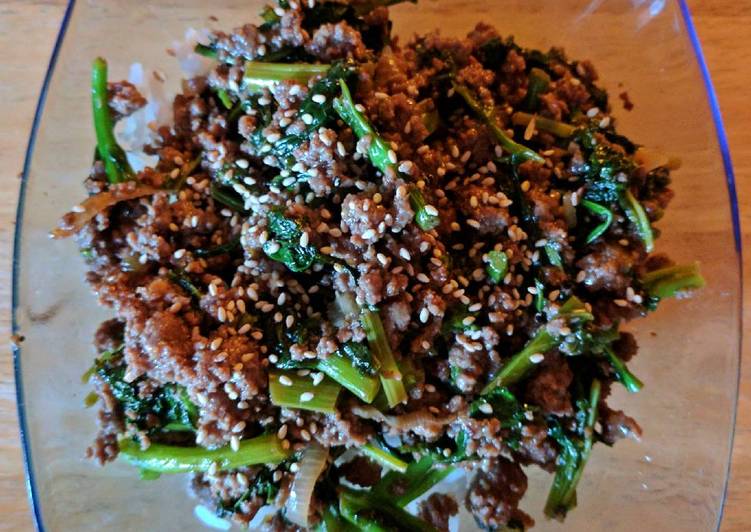Hello everybody, welcome to my recipe site, looking for the perfect Biangbiang mian/noodles (handpulled noodles) recipe? look no further! We provide you only the perfect Biangbiang mian/noodles (handpulled noodles) recipe here. We also have wide variety of recipes to try.

Before you jump to Biangbiang mian/noodles (handpulled noodles) recipe, you may want to read this short interesting healthy tips about Stamina Raising Snack foods.
Eating healthy foods can make all the difference in the way you feel. Increasing our intake of sensible foods while decreasing the intake of unhealthy kinds plays a role in a more balanced feeling. A salad allows us to feel better than a piece of pizza (physically at any rate). This is often a problem, nevertheless, when it comes to eating between meals. Finding snacks that really help us feel better and increase our stamina often involves lots of shopping and scrupulous reading of labels. There’s nothing like one of these brilliant healthy foods when you really need an energy-boosting snack food.
Whole grain foods are an excellent choice for a fast wholesome snack. Starting your morning with a piece of whole grain toasted bread can give you that added boost you need to get going. When you require a fast snack food on your way out the door, don’t forget to look for whole grain chips, pretzels, and crackers. Choosing whole grain foods is always much better than eating the processed grains we commonly come across in our grocery stores.
A large selection of easy health snacks is easily obtainable. Determining to live a healthy lifestyle can be as simple as you want it to be.
We hope you got benefit from reading it, now let’s go back to biangbiang mian/noodles (handpulled noodles) recipe. To cook biangbiang mian/noodles (handpulled noodles) you only need 20 ingredients and 13 steps. Here is how you cook that.
The ingredients needed to cook Biangbiang mian/noodles (handpulled noodles):
- Get For the noodle dough:
- You need 300 g pasta or plain flour
- Use 1/4 teaspoon salt (use more or less depending on preference)
- Take 130 ml water (use more or less depending on flour)
- Use Oil for coating noodles:
- Get 1/4 cup vegetable oil, to coat the fresh noodles (use more or less depending on quantity of noodle)
- Provide Cooking the noodles:
- You need 5 cups (boiled kettle water)
- Get 1/3 cup water, cold
- Use Blanching the vegetable:
- Provide 2 pak choi, stems into wide strips and leaves into finer strips
- Prepare Assembling the noodles:
- Get 2 garlic clove, finely minced or grated
- You need 1-2 spring onion, finely sliced
- Use 1-2 teaspoons chili powder
- Use pinch salt, for each serving
- Get 2-3 teaspoons light soy sauce serving (add more or less depending on preference)
- Provide 1-2 tablespoons black rice vinegar per serving (add more or less depending on preference)
- Prepare Hot oil:
- Get 2-3 tablespoons vegetable cooking oil, per serving
Steps to make Biangbiang mian/noodles (handpulled noodles):
- To make the noodle dough in a large bowl, mix salt with flour. Then add water and stir bit by bit. Using either an electric mixer with a dough hook attachment to mix or if by hand using chopsticks. Tip: add the required water amount first to see whether the dough forms and is kneadable. If not add a tiny drop more water at a time until the dough forms a ball.
- Continue kneading the dough until smooth. Cover the noodle dough with cling film and let it rest for 20 minutes.
- Then after 20 minutes knead the dough again, until the surface is really smooth. This will make the dough easier to work with later and make it very pliable when stretching the dough to make the noodles. Cover the dough again with cling film and let it rest for another 20 minutes.
- In a small bowl pour the vegetable oil. In a medium size baking tray lightly coat and brush with vegetable oil. Remove the noodle dough from the mixing bowl and place on a chopping board. Weigh the dough and cut into two equal halves. Using the first half of the dough cut the dough into 6 portions, cover the other half with cling film (to prevent it drying out). There will be 12 noodle logs in total.
- Shape each one portion into a long log and brush all over with oil. Repeat the process for the second half of the dough. Once all the noodle dough have been shaped and oiled, cover with cling film. Let the noodle log rest for at least 1 hour or until ready to use. Tip: If making the noodles in advance put the noodle log into the fridge and take out an hour before use to let the noodles come to room temperature.
- In a large saucepan pour in the boiled water. On medium heat, bring water to a boil. In the meantime take one noodle log out and place it on a clean flat surface or on a large silicone mat.
- Flatten it and using a rolling pin roll out side ways to make the dough wider (make it as wider as per preference) and then roll out into a wide rectangle. Using chopsticks press it into the middle of the dough to indent it. Tip: this makes it easier to separate the noodles later.
- Then gripping and holding the two ends of the noodle strip slam the noodle dough against the silicone board flat surface This creates the smacking sound. While smacking the noodle dough slightly stretch it during the smashing process. This will make the noodles long. Tip: Stretch out the noodles slowly to prevent breakage.
- Once noodles are at desired length, separate noodles along from the chopstick trace. Tip: separate the noodles all the way to have two noodle pieces or partially separate but don't rip one end to have one long noodle. Repeat the process until you have the desired amount for that portion. I usually cook 6 strands at a time. Then separate noodles per portion in the bowls. Tip: If making it for a large family double the portion size. Have two pots of water on the go so you can cook more at once.
- Go back to the pot of boiling water and add the stems of the pak choi. Once they are half way cooked, add in the noodles. Once water boils again add cold water. And then add the leaves of the pak choi to blanch. Once noodles are cooked transfer the noodles and vegetables into a bowl.
- In the meantime, on medium to high heat in a pan or pot add 2 vegetable oil and heat it up until slightly smoky (this makes 1 serving). Turn off the heat.
- Then place as little or as much of the garlic, green onion and chilli powder on top on top of the noodles and pour the hot oil over the noodles (mainly over garlic, spring onions and chilli powder). Lastly, add soy sauce and black vinegar and mix well. Repeat process 6 to 12 for the remaining servings.
- Eat and serve immediately while the noodles are pipping hot. Tip: this batch should make enough for anyone that fancies a second round of biang biang noodles.
It is said that one biang biang noodle can fill an entire rice bowl (and it's true!). I once tried hand pulling noodles. It was nothing short of a dismal failure. We could still eat them but there were no long, silky strands, just tiny little pieces of noodle. Biang Biang noodles are a Northern Chinese specialty, hailing from Shaanxi Province.
If you find this Biangbiang mian/noodles (handpulled noodles) recipe useful please share it to your close friends or family, thank you and good luck.

